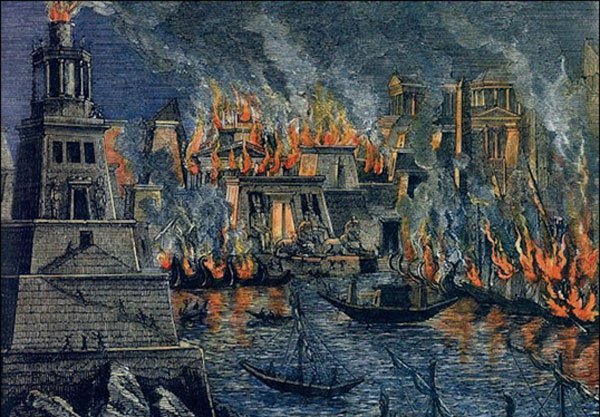In an attempt to subvert the nationalist economic position, the Minister of Home Affairs, Dawson Bates, imposed martial law tactics to rend supremacy over both a rural and urban populous through violence, intimidation and economic sanctions.
HMS Argenta (originally the American cargo ship S.S. Argenta) was a prison ship of the British Royal Navy.
The two deck steamer was laid down in July 1917 by the National Shipbuilding Company of Orange, Texas as Hull No. 245. Shortages of materials meant that she was wooden-hulled, with a steel keelson, stem and stern posts of oak, and timbers largely of yellow pine. This was due to shortages of metals. S.S. Argenta was launched in July 1919.
Argenta’s career as a cargo ship was short. As early as November 1919, there were some signs of leakage, and the ship was out of service as of late 1921. Condemned and declared unseaworthy in May 1922, she was then sold for use as a prison ship (a prison hulk) by the British Royal Navy.
During the 1920s, the vessel was used by the British government as a military base and prison ship for holding Irish Republicans as part of Britain’s internment strategy following the events of “Bloody Sunday” in 1920.
By February 1923, under the 1922 Special Powers Act the British were detaining 263 men on the Argenta, which was moored in Belfast Lough. This was supplemented with internment at other land based sites, such as Larne workhouse, Belfast Prison and Derry Gaol. Together, both the ship and the workhouse alone held 542 men without trial at the highest internment population level during June 1923.
Conditions on the prison ship Argenta were “unbelievable” according to Denise Kleinrichert who wrote the hidden history of the 1920s’ “floating gulag” in Republican Internment and the Prison Ship Argenta, 1922.
Mere paragraphs and footnotes have decided the fate of the men and women as that deserving of ‘Sinn Féiners’. 300 men were arrested within a 24-hour period beginning near midnight on 22 May 1922, almost all nationalist and pro-Treaty but with professional and economic status within their respective communities. Over 900 men and women in the North were eventually ordered lifted by James Craig, Prime Minister of Northern Ireland, under the Civil Authorities (Special Powers) Act between the years 1922 and 1925. The analysis of the detention without legal recourse has spanned over three years of research of public and private archives. Interviews with former internees and countless descendants of internees provide an interesting exposé. The words, writings and drawings of innumerable men interned aboard the prison ship, HMS Argenta, together with those at Larne Workhouse Camp unfold the miseries of a two-year ordeal. The lives of the internees were impacted beyond their captivity. Malnourishment, disease and death, physical abuse, public abandonment, hunger strike, prayer and escape bids served to foment the direction of their lives.
In 2011 a rare and unusual autograph book from the Argenta, with a large number of signatures of prisoners, almost all with Northern Ireland addresses, mostly late 1922, was auctioned by Mealys Rare Books Limited. Signatures include Mícheál mac Eochaidh, W. Quillan, Packie Murphy, J.P. Kearns, Michael Carraher, Charlie Magee, Peter Rafferty, Mick McIlhatton, Frankie Corr, Owen Montague (Patronymic Teague; Co Tyrone,) John Grimes, John Bell, Joseph McKenny, Michael O’Neill, Liam Ua Donngaile, Art Mac Partolon (quoting Shakespeare), F.G. Duffy, Jim Rooney, Seosamh O Cianain, and Patrick Gormley.
An inscription from the book is: ‘When you are on some lonely road, Waiting some friends to see, Let your thoughts turn towards the Argenta, And sometimes think of me ..’ — Frankie Corr
As a result of author Denise Kleinrichert’s lobbying efforts, the files of all the internees — most of them named in an appendix to her book — are now available for viewing at the Public Record Office of Northern Ireland (PRONI).
A must read by Author, Denise Kleinrichert: Republican Internment and the Prison Ship Argenta 1922
Photo: S.S. Argenta (Design 1006). This Daugherty-type ship was built by the National S.B. Co., Orange, Texas. She is shown here around the time of her completion on 30 July 1919.






